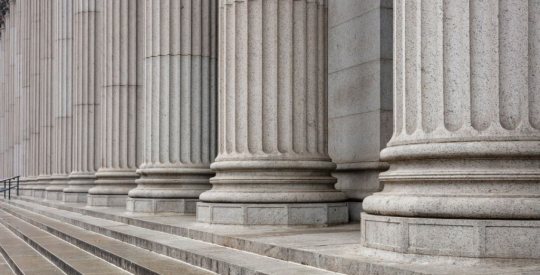Roughly $146 billion in bank bailouts are not yet repaid to the Treasury Department as of the end of March, and the return on those investments remains “unknowable,” according to the Special Inspector General for the Troubled Asset Relief Program. More than 550 banks have not repaid their bailout, and unloading investments in the most troubled institutions such as American International Group (AIG) and General Motors (GM) remains elusive. SIGTARP is the program’s remaining watchdog after the Congressional Oversight Panel closed in April. The Congressional Budget Office continues to drop its estimate of TARP’s eventual cost, lowering it to $19 billion in March. The Public-Private Investment Program, which buys up toxic mortgage-backed securities, earned $1.2 billion for the Treasury in the first quarter and is scheduled to last at least seven more years. SIGTARP said in its quarterly report that TARP and its underlying initiatives still have years to go. “TARP’s financial outlook is improving, with more institutions repaying TARP and cost estimates continuing to decline,” according to the report. “Nevertheless, it bears repeating that Treasury’s ultimate return on its TARP investments depends on many variables that are largely unknowable at this time.” SIGTARP continued its critique of TARP’s moral hazard cost and the underwhelming performance of its foreclosure prevention initiatives. “Many institutions remain ‘too big to fail.’ Today, the biggest banks are bigger than ever. These banks continue to enjoy unwarranted advantages over their smaller competitors such as better access to capital and cheaper credit,” SIGTARP reported. As for the Home Affordable Modification Program, the Treasury’s flagship initiative to assist homeowners by paying mortgage servicers for modifications, remains beset by fundamental problems, according to the report. Through February, servicers started more than 633,000 permanent modifications and look increasingly unlikely to hit the original goal of between 3 million and 4 million. “Many of these problems relate to the structure of the program, which puts the ultimate decision to modify a mortgage in the hands of mortgage servicers, whose performance has been extraordinarily poor,” SIGTARP said, adding consumer complaints to its hotline hasn’t let up despite recent and upcoming changes from the Treasury. TARP expired in October, but the public perception that the program is winding down is inaccurate. Billions of obligated funds can still be expended through 13 programs, including HAMP and PPIP. Of the obligated amount, $410.5 billion had been spent as of March, leaving $58.9 billion in five programs remaining, SIGTARP said. “Congress understood that TARP might last for many years, and that oversight would be essential throughout TARP’s existence,” SIGTARP said. “In other words, SIGTARP will remain ‘on watch’ as long as TARP assets remain outstanding.” Write to Jon Prior. Follow him on Twitter @JonAPrior.
Watchdog: More than 550 banks still owe the government
Most Popular Articles
Latest Articles
DOJ charges one of America’s top LOs in alleged mortgage fraud scheme
Christopher Gallo was charged with one count of conspiracy to commit bank fraud.
-
Top Producer Review: Features, pricing & alternatives
-
A&D Mortgage names new servicing manager
-
HUD aims to help protect communities from extreme heat
-
Freedom Mortgage founder addresses ’extraordinary’ credit profiles, profitability and products
-
Realty One Group joins growing list of firms to settle commission lawsuits



